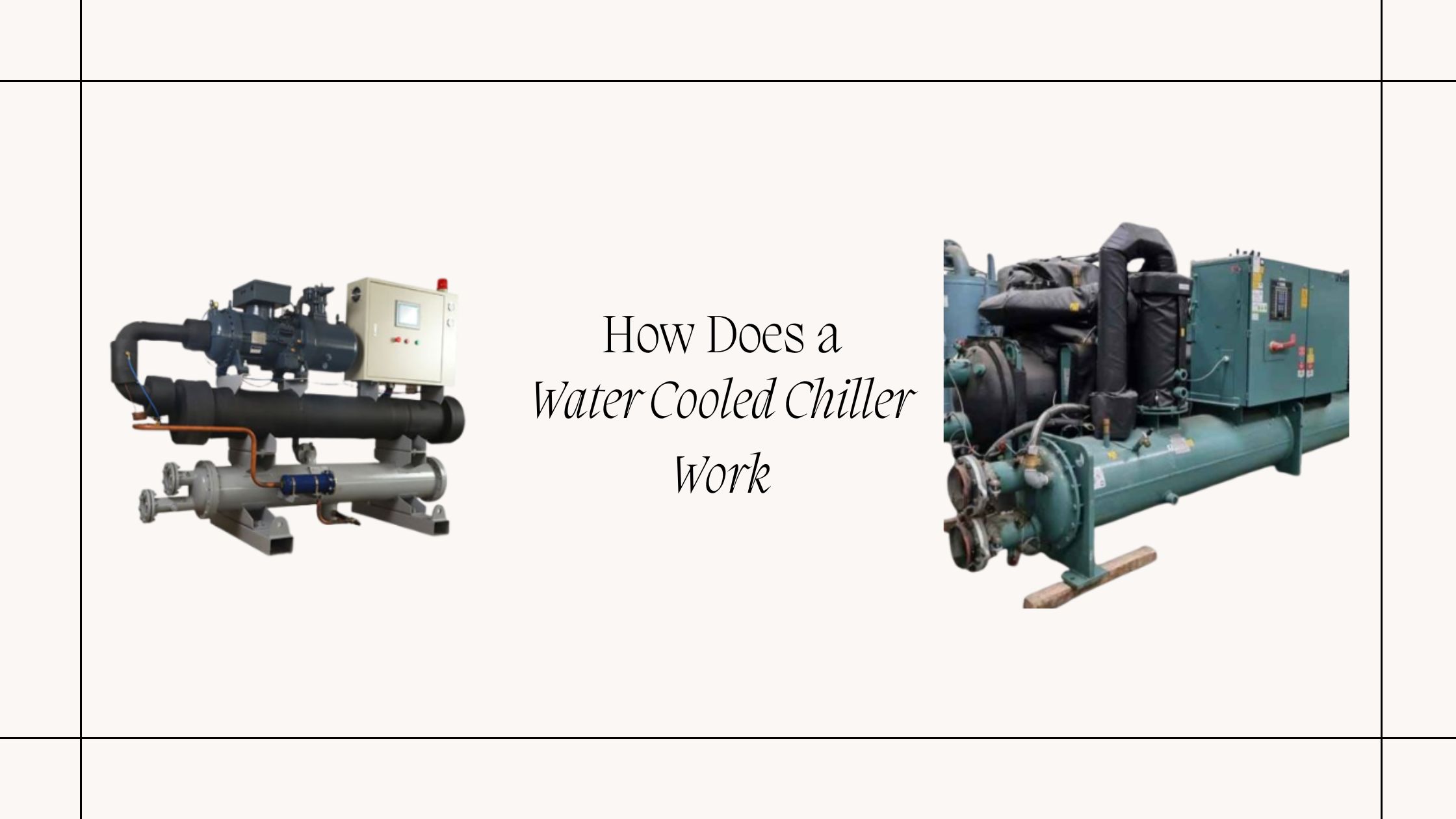For many industries, effective cooling systems are essential to maintaining smooth operations and avoiding overheating in equipment. When it comes to cooling large industrial setups or commercial buildings, water-cooled chillers are often the preferred solution. But how does a water-cooled chiller work, and why is it such a popular choice?
In this guide, we’ll break down the inside workings of water cooled chillers, explore their benefits, and help you decide if they’re the right option for your business. Whether you’re new to the concept or looking to replace an existing water cooled chiller system, this detailed guide will provide the information you need.
What Is a Water-Cooled Chiller?
Before moving to the point of how a water-cooled chiller works, let’s define what it is. A water cooled chiller is a type of cooling system that uses water to transfer heat away from a process or equipment. Unlike air-cooled chillers, which dissipate heat into the air, water-cooled chillers rely on a water loop and a cooling tower to release heat. These systems are often used in large-scale industrial facilities, hospitals, factories, and data centers.
Why Choose a Water-Cooled Chiller?
If you’re wondering how does a water cooled chiller work, it’s crucial to understand the key reasons businesses choose this system:
Higher Efficiency: Water-cooled chillers tend to be more energy-efficient, especially in larger installations. The thermal properties of water make it a better medium for heat transfer than air.
Smaller Footprint: Water-cooled chillers are often more compact compared to air-cooled systems, making them ideal for facilities with limited space.
Longer Lifespan: These chillers generally have a longer operational lifespan due to the stable cooling environment provided by water.
How Does a Water-Cooled Chiller Work?
Let’s break down how a water-cooled chiller works step by step:
1. The Refrigeration Cycle
At the core of how a water-cooled chiller works is the refrigeration cycle, which involves the compression, condensation, and evaporation of a refrigerant. The refrigerant plays a crucial role in absorbing and removing heat from the process that requires cooling.
Compressor: The process begins with the compressor, which increases the pressure of the refrigerant gas.
Condenser: The compressed refrigerant moves to the condenser, where it comes into contact with water from the cooling tower. This is where the magic of water cooling happens, as the water absorbs heat from the refrigerant, turning it from a gas back into a liquid.
Evaporator: The liquid refrigerant then travels to the evaporator, where it absorbs heat from the chilled water system or directly from the process it’s cooling, turning back into a gas.
Cooling Tower: The water that absorbs heat from the condenser is pumped to a cooling tower, where it’s cooled by airflow before being cycled back to the system.
This continuous loop is the essence of how a water-cooled chiller works to keep your equipment cool.
2. Role of the Cooling Tower
One of the defining features of how a water-cooled chiller works is the cooling tower. This is a separate component responsible for releasing the heat absorbed from the refrigerant into the atmosphere. Water is circulated between the condenser and the cooling tower, where it is sprayed over a heat exchange surface and cooled by air flowing through the tower.
3. Heat Exchangers and Water Circulation
To better understand how a water-cooled chiller works, it’s important to note that heat exchangers play a key role in transferring heat between the refrigerant and the water. This water is circulated through pipes and coils, ensuring that it comes into contact with both the refrigerant and the external cooling tower.
Advantages of Water-Cooled Chillers
Now that we’ve covered how a water-cooled chiller works, let’s explore why they are so widely used. Their operational process offers several unique advantages:
1. Energy Efficiency
Water-cooled chillers are known for their superior energy efficiency compared to air-cooled systems. Water’s capacity to absorb heat is much greater than that of air, which makes water-cooled chillers more effective at transferring heat.
Lower Energy Costs: Because water-cooled chillers can move more heat with less energy, businesses often see reduced electricity costs.
Better for Large Installations: Water-cooled chillers are particularly suited for larger facilities where cooling demands are high.
2. Quiet Operation
If noise is a concern for your facility, you’ll be pleased to learn that water-cooled chillers operate quietly. This is partly due to their use of cooling towers, which are generally located away from the primary operational areas.
3. Longevity and Durability
Another key benefit of water-cooled chillers, aside from how effectively they work, is their long operational lifespan. The water-cooled environment results in less wear and tear on the system compared to air-cooled models, which are more exposed to external elements.
FAQs
Q1: How does a water-cooled chiller work compared to an air-cooled chiller?
A water-cooled chiller uses water to absorb and transfer heat, while an air-cooled chiller dissipates heat into the surrounding air. Water-cooled chillers are typically more efficient but require more complex installation and maintenance.
Q2: What is the lifespan of a water-cooled chiller?
With proper maintenance, water-cooled chillers can last 20 to 30 years, depending on usage and environmental factors.
Q3: Can a water-cooled chiller be used in a small facility?
Yes, water-cooled chillers can be used in facilities of various sizes, though they are most commonly installed in larger commercial or industrial spaces.
Q4: Is water treatment necessary for water-cooled chillers?
Yes, water treatment is essential to prevent scaling, corrosion, and bacterial growth within the system.
Conclusion
Understanding how a water-cooled chiller works is key to choosing the right cooling system for your business. With their superior energy efficiency, longer lifespan, and quiet operation, water-cooled chillers are a reliable choice for many industries. However, they come with their own set of challenges, including water treatment and complex maintenance needs.
If you’re considering installing a water cooled chiller for your facility, it’s crucial to evaluate your specific cooling requirements and consult with an expert to find the perfect solution. With proper installation and care, a water-cooled chiller can provide your business with efficient and long-lasting cooling for years to come.
Chiller House is a leading chillers manufacturer in Lahore Pakistan who are providing the high quality manufacturing and after sale services at your desired location. They have the expertise to manufacture water cooled chillers, air cooled chillers, dead body freezers, industrial chillers, and also provide the customization for all types of chillers according to customer requirements.

